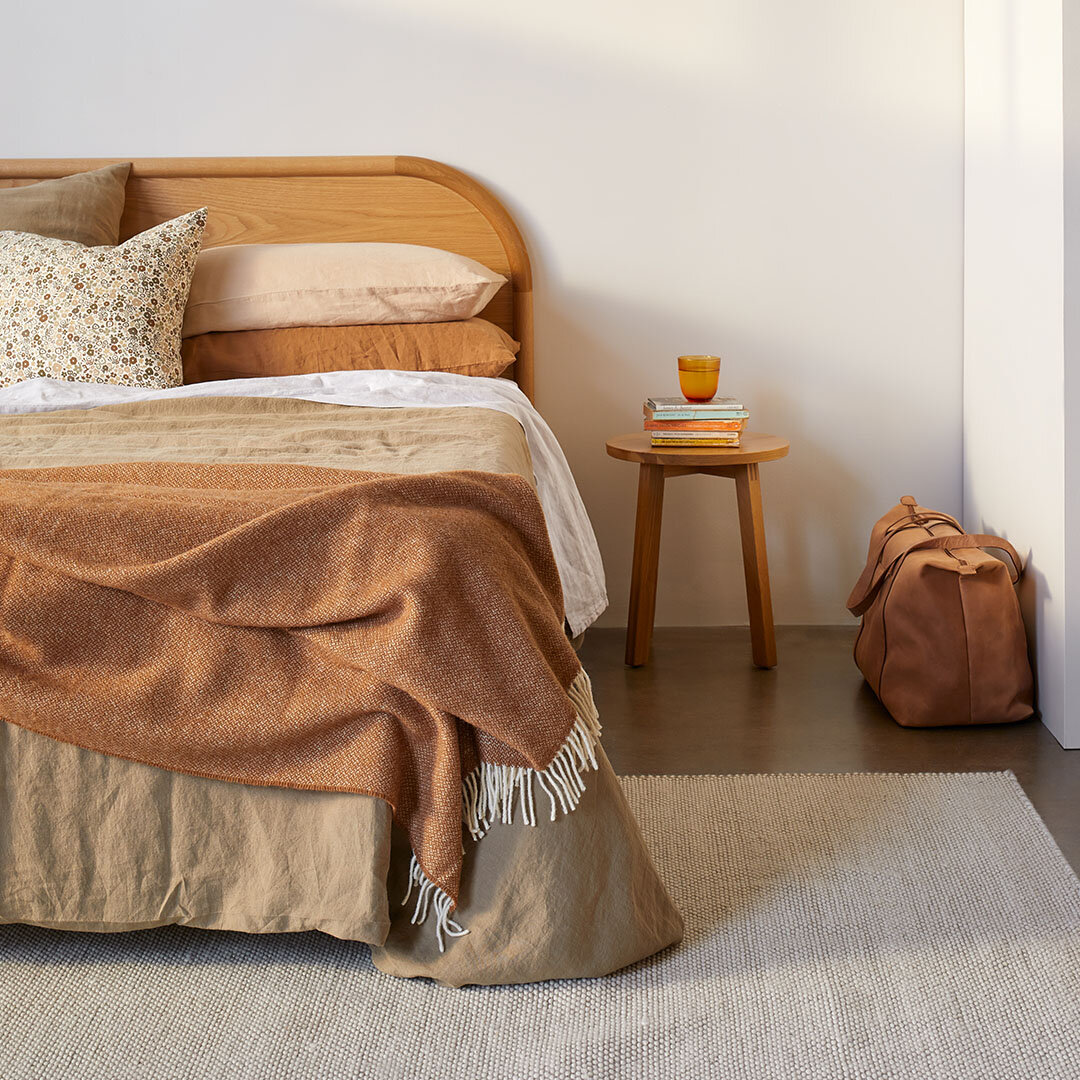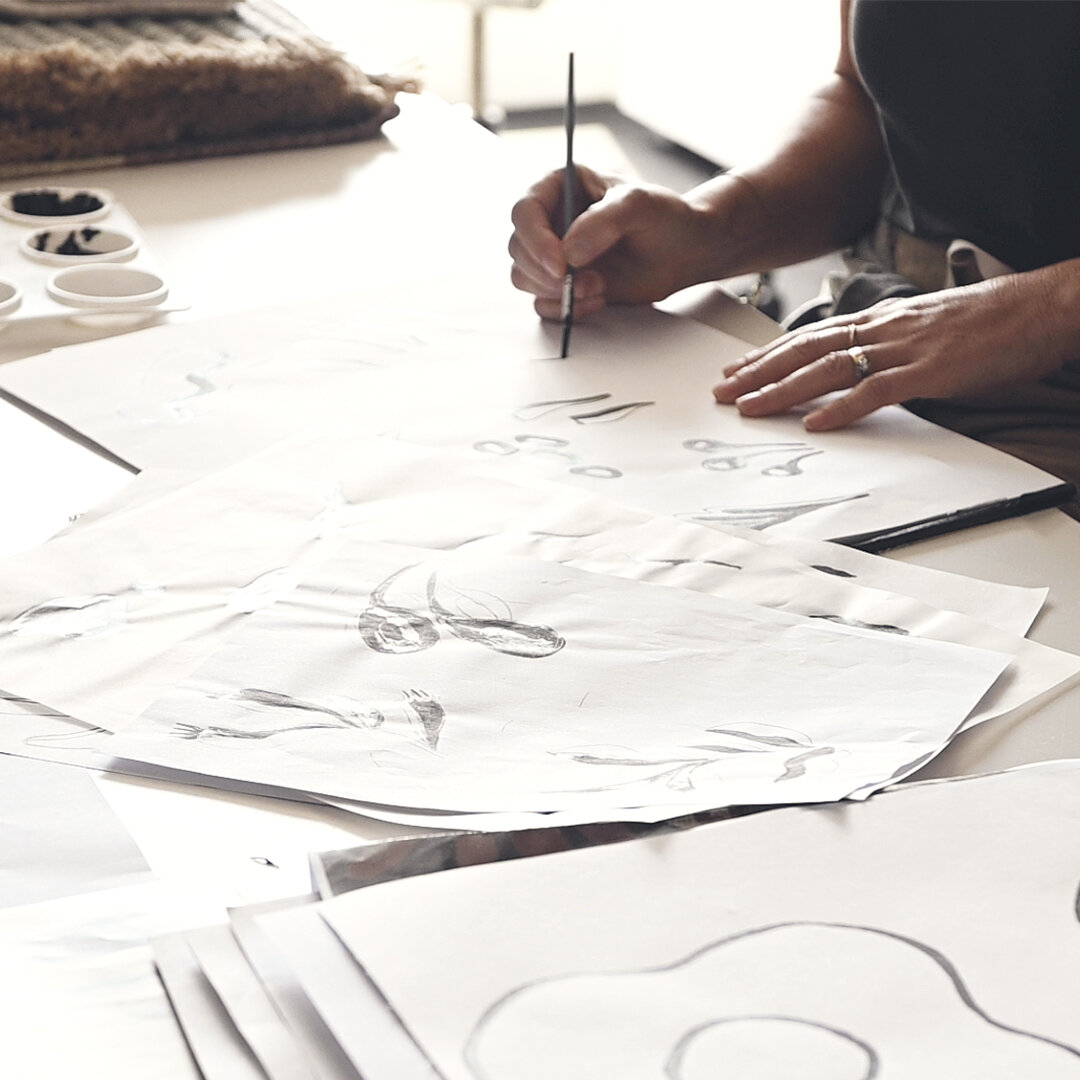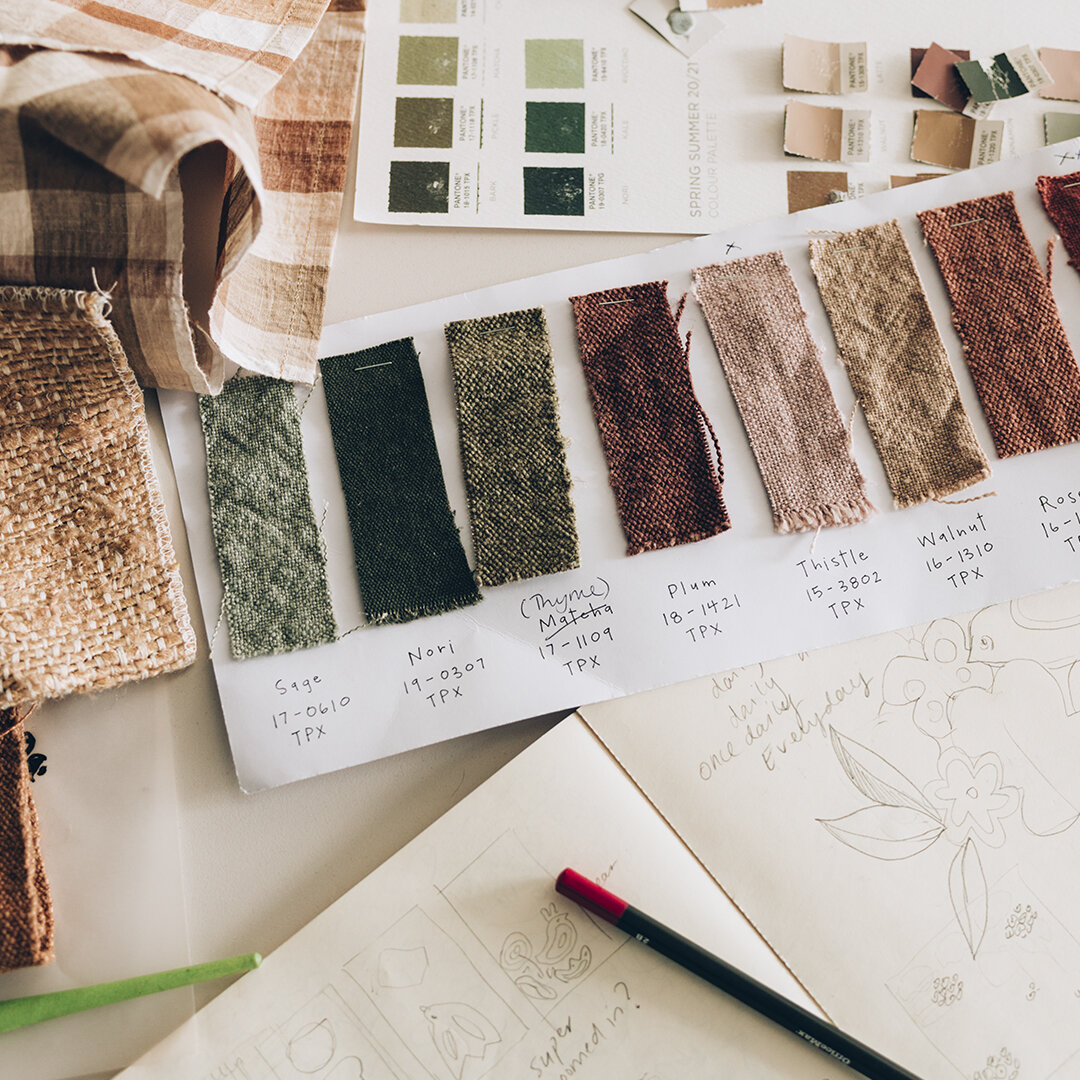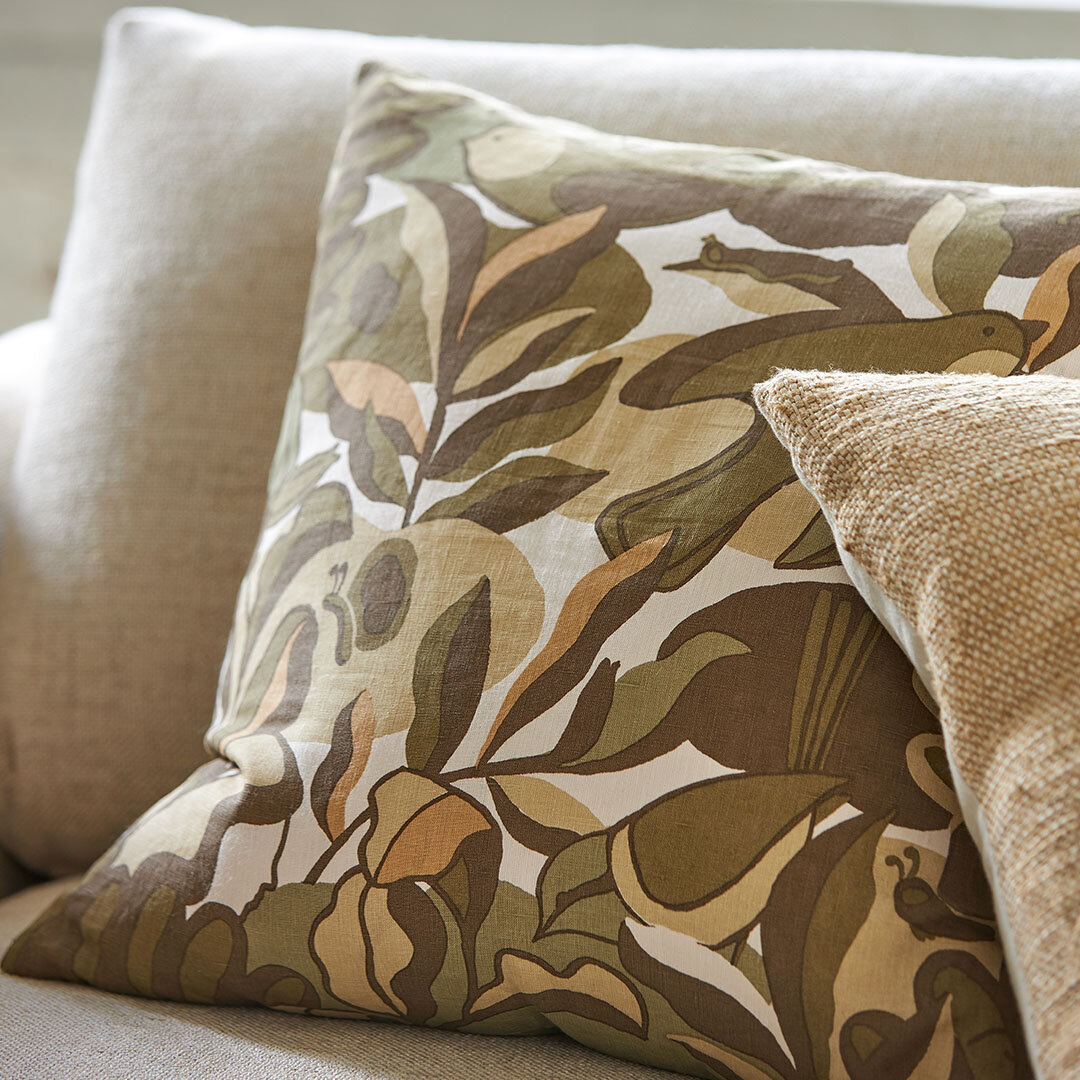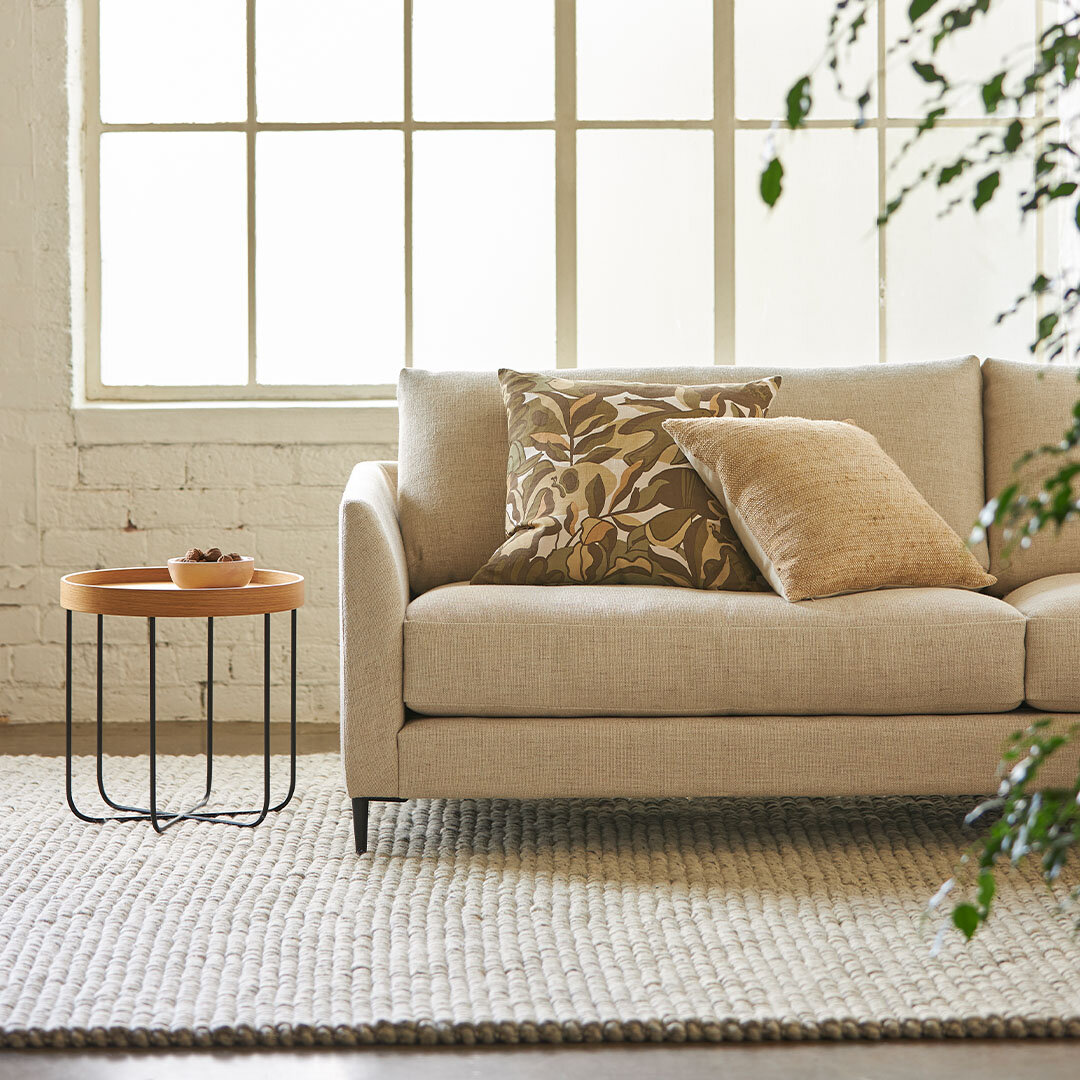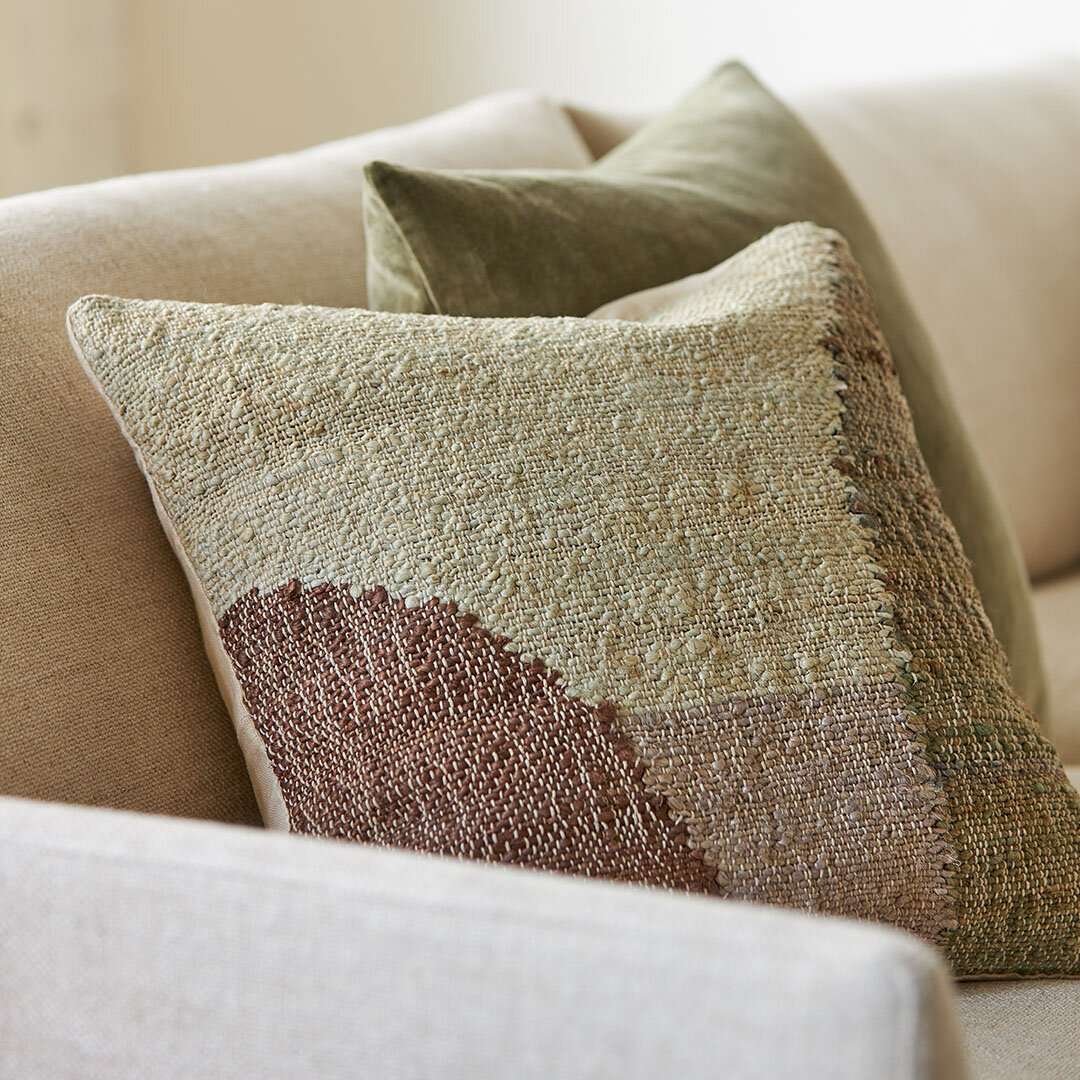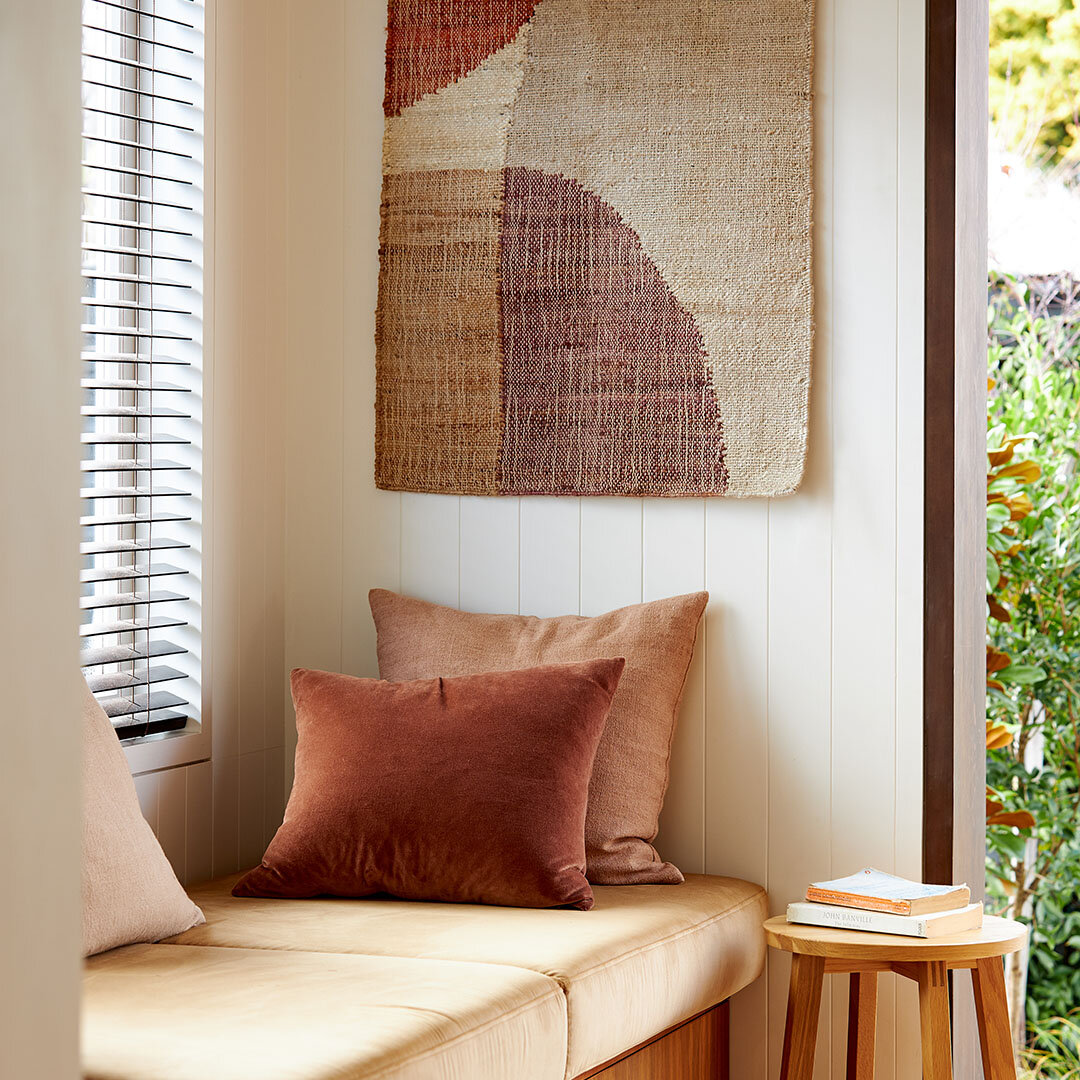Q&A: Bringing our Sunday Afternoon SS20/21 collection to life
Our newly launched Sunday Afternoon SS20/21 collection is all about simplicity. A simple aesthetic sits alongside tactile textures and a sun-warmed palette. The collection was brought to life in our Auckland studio by our textile designers Imogen Tunnicliffe, Sophie Clapson and Georgia Robertson.
We sat down with Imogen and Sophie to talk to them about their inspiration, creative process, and what it is like seeing the collection come together.
Where do you draw inspiration from when designing a seasonal collection?
Imogen: We draw inspiration from anywhere and everywhere. Sometimes it can be quite specific, and sometimes it can be related to something quite abstract or obscure. The Sunday Afternoon collection centered more around creating a mood through our use of texture, colour and pattern.
Sophie: We often draw inspiration from quite diverse art genres and design disciplines—architecture, fashion, furniture, sculpture, as well as textile. This informs our designs, textures and colours for the season. So even though we’re working primarily with fabric, our designs can be inspired by something quite seemingly different.
If you had to describe the collection in a single phrase, what would you say?
Imogen: This collection feels sun-warmed and mellow and has a slightly nostalgic feel. Like the old days at the bach kind of thing—a simpler time.
Can you talk us through your creative process? How does your moodboard help guide this?
Imogen: The first step in the creative process centres around a lot of research and thinking, which leads to the creation of the moodboard. The moodboard consists of a collection of imagery and ideas that inspire and direct us throughout the season and reflect the mood and style we are trying to create. It is an invaluable tool that we refer back to constantly throughout the creation of the collection. Simultaneously, we develop the colour palette and begin thinking about textures, patterns and techniques that will best represent the ideas behind the collection.
Sophie: Many of the colours that end up forming the colour palette are represented on the moodboard. It also helps to guide the style of our illustrations. We’ll work with pencil, crayon or charcoal if we want a scratchy texture. If we want something more fluid, we’ll use ink or gouache—which is what we used a lot of this season to create a relaxed aesthetic.
The patterns throughout the collection are originally hand-painted by yourselves. How are these illustrative patterns brought to life?
Imogen: We always start by drawing—lots of rough sketching, getting any and all ideas down on paper. From here, we start discussing how the idea might develop into a design or product; how it might be constructed, fabric options, and colour combinations. For a hand-drawn or hand-painted design, we sometimes construct the whole design all at once. At other times we will create all the elements individually, and then layer them over each other on the computer. For screen print—the technique we most commonly use—to build texture and depth in a design, you need to create multiple layers of pattern and colour by hand. We eventually transfer most designs onto the computer and work them up through Illustrator. This process consists of a lot of trial and error, and it is a really important part of the process to allow yourself the time for this.
Sophie: It’s amazing how many pathways a design can take that no one sees. Our workbooks are full of sketches that never see the light of day, but that is all part of the refining process.
Imogen: Once the designs are at a certain point, we send them to our suppliers for sampling and start experimenting with different fabric qualities, colour combinations and techniques. We go through several rounds of sampling before we finally approve the design and it gets made into the finished product.
Our behind-the-scenes video shows the creative process of the Sunday Linen Cushion Cover. Can you tell us about the inspiration for this particular pattern?
Imogen: This pattern was inspired by walks through the Waitakere Ranges that I often do with my family on Sundays. I wanted to recreate that kind of discovery you experience when you’re in the bush… discovering flowers, animals, birds, and other things you might not notice straight away. New Zealand’s native flora and fauna aren’t bright and obvious—it’s often very subtle and hidden. I wanted the design to have this same sense of discovery so I didn’t want the creatures to stand out more than the pattern or the colours. I hope people will suddenly be like “oh, there’s a kauri snail” and discover things for themselves.
What is it like seeing the collection come together and being styled in people’s homes?
Sophie: When we design a collection, we’re working in relative isolation in our studio. It’s always satisfying seeing designs come to life in a photoshoot, just as you imagine it and then eventually seeing how people choose to arrange them in their own homes amongst their existing possessions. Often the way people interpret our designs and style them are not necessarily what we would have thought of—it’s really nice to see their take on it.
Imogen: It’s really exciting seeing the collection in a different context outside of our studio and stores. For example, we might see someone who has posted something on Instagram. You realise it’s actually someone who’s gone and chosen a piece, taken it back to their home, and they’re proud of it. It gives you a real buzz.
Do you have a piece from the collection that you’re most proud of?
Imogen: The Piha and Muriwai range are probably the pieces we’re most proud of. They were even better than what we envisioned, partially due to the technique in which they were created. The forms are very simple so we really wanted to inject some organic texture into the designs. It was amazing how the handwoven jute and cotton brought the forms to life. For us, these designs epitomised what we’re trying to talk about in the collection; the colours, texture and subject matter all working together to tell the story.
Sophie: When discussing the angle we wanted to take for this collection, we kept coming back to ideas around simplicity; pulling back the noise and reducing patterns to their simplest forms, while still evoking the feeling we wanted to achieve. Piha and Muriwai really tell the story of the collection. I love how they translate so well into different areas of the home—placemats in the dining, cushions and wall hangings in the living.
Finally, what does your perfect summer Sunday afternoon look like?
Sophie: A bush walk followed by a swim at the beach and a picnic dinner. My partner grew up in Piha so we love heading out there to escape the city. I definitely feel most happy and relaxed by the ocean.
Imogen: I have quite a big garden at home and my perfect Sunday afternoon is when we’re all outside—my kids, my partner and Sid the cat. We’re all outside doing—planting, weeding, the kids love getting stuck into the garden with me. I love when they get their little gloves on and their little trowels and they start digging away. We’re all just busying ourselves outside. Then, at about four o’clock, we sit back with a glass of wine and watch the kids race around. I just love it!

